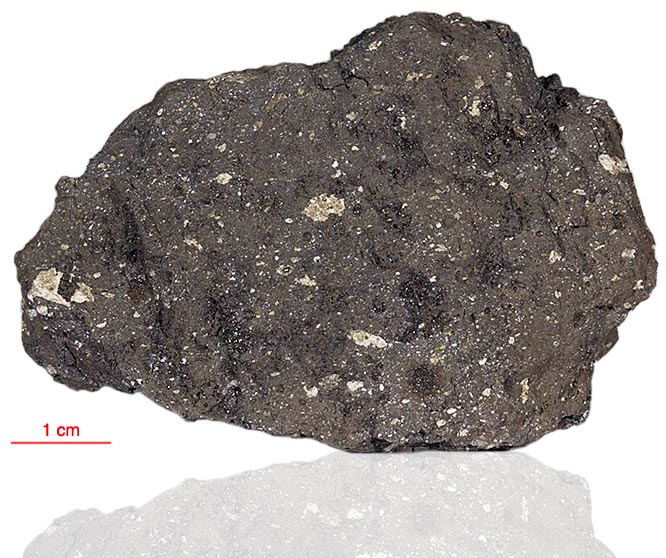78535 (7) Speckled Regolith Breccia
Collection:
Apollo 17

Click the microscope button to view a
thin section for this sample.
MicroscopeClick the microscope button to view a thin section for this sample.
MicroscopeFact sheet
78535 (7) Speckled Regolith Breccia
| 78535 and 78568 are coherent regolith breccias with numerous small plagioclase feldspar inclusions set in a dark brown (glassy) matrix. The breccia matrix consists of abundant small mineral clasts together with dark brown glass that firmly cements the rock. Porosity is low. There are small clasts of mare basalt (rotation 1), various types of breccia, a range of different coloured glasses (see rotation 2 for two small examples) and numerous mineral clasts. The sample weighed 103.4 grams before analysis and has not been dated. Further details of this and other Apollo samples are here: http://curator.jsc.nasa.gov/lunar/ |
About this collection
Apollo 17, the final manned landing mission, had two objectives: to obtain samples of ancient rocks from the lunar highlands and to look for evidence of younger volcanic activity on the valley floor.
This small Collection contains material deriving from both periods, including igneous rocks around 4.3 billion years old from the lunar highlands as well as younger volcanic samples dating from about 3.6 billion years ago.
Apollo 17 was launched on 7 December 1972.






